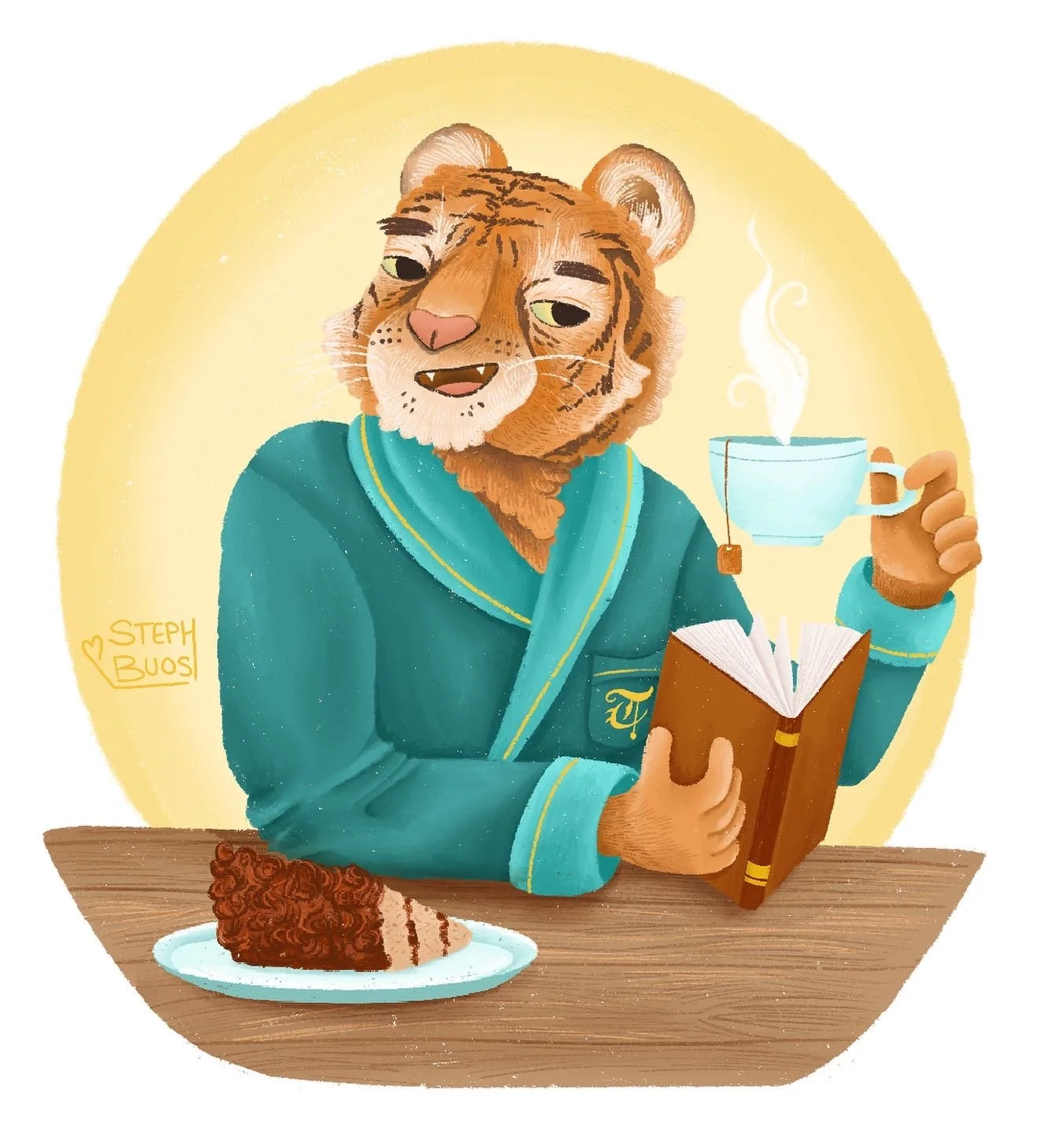Playing with Animal Faces
It can be both easy and challenging creating an animal character. Animal faces already have so much personality to them, lending them automatically to certain personalities. Last week, I worked on two illustrations that featured two very different animals: the Grizzly bear, and the Bengal tiger. With one, I’ve had quite a bit of practice drawing already so trying to work out a character was a little easier (maybe only 3-4 faces before I got one I liked), but with the tiger I was starting from scratch. It made me realize how much harder it is to develop a unique character based on an animal when it’s so easy to default to a stereotype.
Drawing Papa Grizzly.
With Papa Grizzly, I knew I wanted a character that evoked the warm, protective feeling a child might experience when wrapped in a big bear hug from a father-figure.
But when I started with the original sketch, it was a bit tough to hit all the characteristics I was looking for. With the bear, I didn’t use references at first. I had drawn bears a few times at that point and I was comfortable drawing from memory. What I found, was that my memory leaned more towards “goofy” and “sleepy” when it came to drawing bear characters.
Tell me you don’t think goofy and sleepy when you see these images. What other words come to mind? For me, I also see curious, a little naive, a bit dopey, maybe, definitely non-threatening for the most part.
It really made me wonder about the subjective nature of art and character design. There are definitely stereotypes that come into play when working out a character design, which isn’t always a bad thing—because a stereotype simplifies a concept and when used in the context of creating a character for a child to understand, this can work as a tool. You just need to be careful in how and when you use that tool.
For me, thinking of what came to mind for “protective,” “strong” and “warm,” helped when trying to create Papa Grizzly.
So maybe you can tell from some of my sketches, I had to play around a bit, both with eye shape, eyebrow, chin and even the head shape, before I settled on a look I felt came close to the visual characteristics I wanted for the character. I ended up going with the top right on the first image (but as you can see from comparing the sketch to the original, I still had to make some changes. He still looked a bit too sleepy for what I needed).
Debonair Tiger
I’m still not convinced I fully brought to life what I initially envisioned for this character. This one was a lot harder because I had very little ideas for what “debonair” might look like. When I think of tiger, I immediately think “regal,” but debonair in my mind leaned towards sophisticated and approachable; that’s what I tried to do.
(A part of me wonders if I made him too sleepy, but figured he’s drinking tea in the morning so we can cut him a bit of slack)
For this tiger, I did look at references—a whole page full that I kept open on my laptop as I sketched. And it took quite a few different head sketches before I settled on the above character shape.
My takeaway from these two illustrations? There are so many ways you can draw an animal character, especially if you want to give them the nuances of facial features that humans enjoy. Did you know that the human face has 43 different muscles which are capable of making more than 10,000 expressions? With so many, is it a wonder that we tend to simplify into categories we can easily identify? Eyebrow like this means that, mouth shaped like so means this… Taking that and translating it onto an animal face can be a bit challenging. So you need to do a couple things:
Understand the animal, it’s core face shape, it’s main defining characteristics
Have in mind the key characteristics (or personality stereotypes) you want your character to visualize. This can help with your experimentation, and give you a base to build on.
Practice! Take a look at human facial expressions if you need to, find references and don’t be afraid to draw more than one face.
Keep going until you create a face that feels right for the character. Sometimes that might mean you’ll nail it on the second, other times maybe on the 15th attempt. To be honest, for my tiger character I’m still not sure if I nailed it. The faces below I created after I finished rendering the Debonair Tiger illustration because I wanted to keep exploring and maybe find a face that got a bit closer to the idea in my head.
How do you approach character design? I’m still learning—one key lesson I’ve realized over my years as an illustrator is that I will never stop learning—so here are some resources you might find useful in your own learning journey:
100 Heads Challenge (Pinterest Reference collection)
Drawing - Creating Animal Characters by Aaron Blaise (Video)










